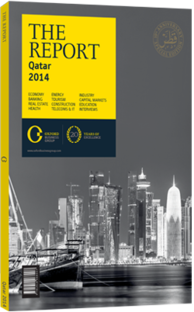Making inroads: Tackling congestion with expanding road infrastructure and public transit projects
Thanks to an influx of foreign workers and a steady birth rate, Qatar’s population is among the fastest-growing in the world. The population grew by more than 25% from 1.55m in 2008 to 2.01m in January 2014. The capital’s metropolitan area accounted for nearly 75% of the population in 2012, according to the government’s Permanent Population Committee. The growing population is a welcome sign of economic growth, but more residents also means a commensurate increase in the need for transport links. Plans are in place for expanded public transportation, including a new Doha metro and light rail system, but these projects are scheduled for completion in a few years’ time. In the meantime, Doha’s roads and highways are the primary means of transport, and population growth and ongoing infrastructure projects have meant that personal vehicles are sharing many routes with lorries carrying construction materials – a combination that has been putting increasing pressure on local roads.
Paving A Way Forward
The authorities are well aware of the limitations of the current road infrastructure. Ashghal, Qatar’s Public Works Authority, is gearing up for comprehensive upgrades of the country’s road and highway networks. “Qatar’s expressway programme alone will cover thousands of kilometres,” Vinod Kambrath, senior strategic specialist at Ashghal, said at Doha Bank’s Real Estate, Infrastructure & Urban Development Summit in April 2013. This construction includes new roads as well as the addition of lanes to existing routes. Concrete steps toward many of these planned projects began to gain speed in the following months. In May 2013, Ashghal said it had 35 contracts it planned to award as part of roads upgrades, and by June 2013, it announced contracts worth QR7.2bn ($2bn) for 24 new expressway projects. The new roads include the East-West Corridor Project, an 11-km road that will run from the Barwa development to Al Matar Street south of the Air Force Roundabout. Other work, like a new orbital highway, upgrades to ring roads and multi-level junctions, is also on the way. Among these road projects, one of the most critical is an alternative route for lorries. Though vital for transport and logistics, heavy trucks aggravate congestion problems with their size, lumbering speeds and often hazardous loads.
The municipality has already banned lorries from some major roads during peak traffic hours. Bans, however, are merely a stopgap measure without solid alternative routes in place. To address the issue, Ashghal has planned a new truck road to connect Al Khor with Mesaieed. Upon completion, the road would connect Ras Laffan to Mesaieed Industrial City, providing an alternative route for lorries moving between two of Qatar’s largest manufacturing hubs.
Looking Forward
In the meantime, however, lorries and regular traffic are squeezed on regular routes.
When asked if infrastructure can handle simultaneous work on highway upgrades and on the coming railway system, Ashghal said it would find ways to accommodate both projects. “Even if it [capacity] is not sufficient, we have to do it… Committees are trying to find solutions to address these problems,” Nasser bin Ali Al Mawlawi, president of Ashghal, told press during the project announcement ceremony.
In the immediate future congestion seems inevitable, but Doha, like its neighbour Dubai, is undergoing the growing pains of a city stepping onto the world stage.
Even if the short-term traffic outlook is tight, the outlook for the medium and long terms is looking brighter.
Ground has broken on upcoming metro lines, with routes targeting key transport arteries. Alternatives like cycling and walking have also seen recent progress.
Although the weather is prohibitively hot in the summer, milder temperatures at other times of year bode well for alternatives to driving. In June 2013, Ashghal said cycling lanes were planned for the East-West Corridor Project, and the Public Works Authority has said that it plans to include cycling lanes in all the country’s road projects. A combination of more roads and alternatives to cars could alleviate congestion in the short term, while longer-term solutions are considered.
You have reached the limit of premium articles you can view for free.
Choose from the options below to purchase print or digital editions of our Reports. You can also purchase a website subscription giving you unlimited access to all of our Reports online for 12 months.
If you have already purchased this Report or have a website subscription, please login to continue.

